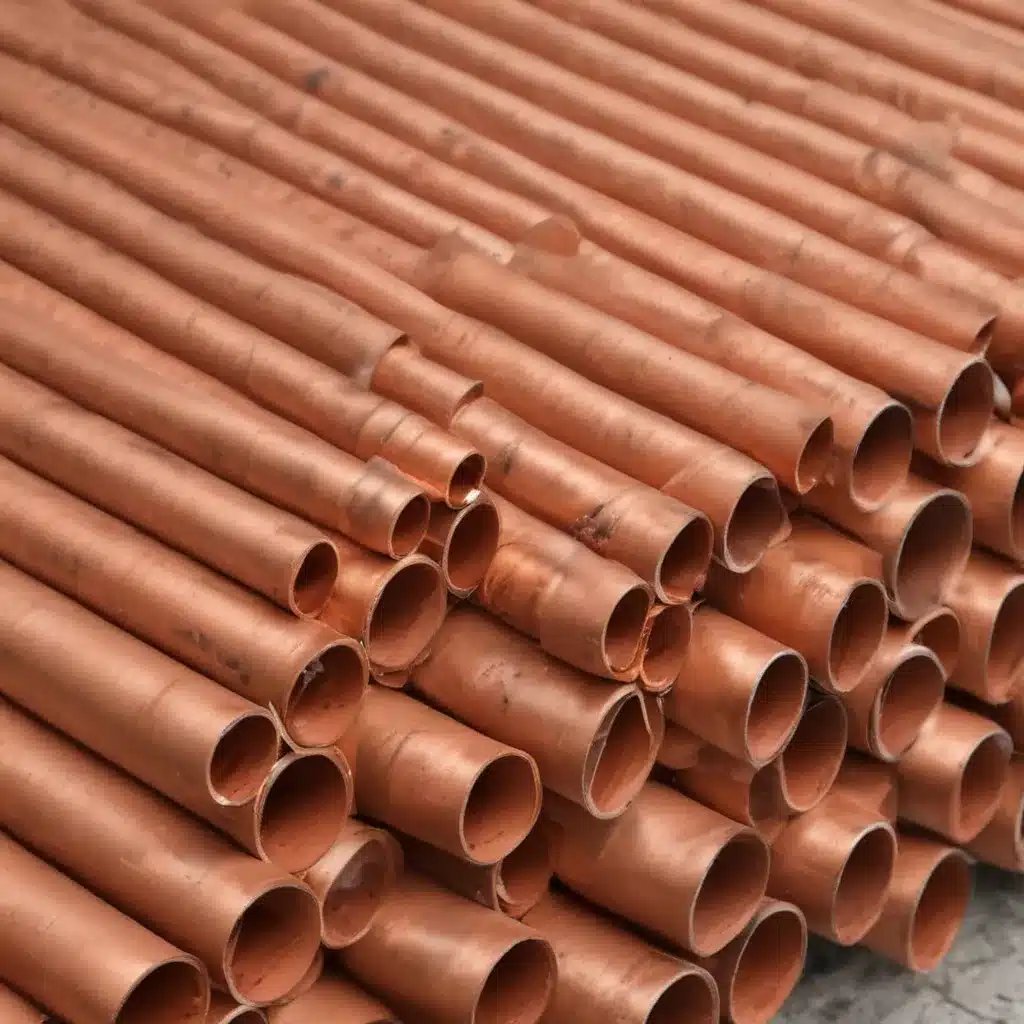
Copper vs PVC Pipe Comparison for Domestic Plumbing
Copper Pipe
Now, this might seem counterintuitive…
When it comes to plumbing materials, copper piping has long been a trusted and reliable choice for both residential and commercial applications. We learned this the hard way… Formed from durable, corrosion-resistant copper, this type of piping has been used in plumbing systems for centuries, thanks to its exceptional durability and longevity.
Material Properties
Copper pipes are renowned for their strength and ability to withstand high temperatures and pressure, making them suitable for both hot and cold-water applications. With an average lifespan of 50-70 years or more, copper piping is considered an excellent long-term investment for homeowners and building managers alike. Additionally, copper contains natural antimicrobial properties, which help to maintain the purity and quality of the water flowing through the system.
Installation Considerations
While copper pipes are highly robust, their installation can be more complex compared to some other materials. Copper piping typically requires skilled soldering or brazing techniques to join the sections together, which demands the appropriate tools and expertise. This rigid nature of copper also makes it less suitable for intricate or complex plumbing layouts, as it is not as flexible as some alternative options.
Thermal Conductivity
One of the key advantages of copper piping is its excellent thermal conductivity. This means that copper pipes are highly efficient at transferring heat, making them a popular choice for hot water distribution systems. However, this same property can also be a potential drawback in some cases, as copper pipes can be more susceptible to freezing in cold climates compared to other materials.
PVC Pipe
In recent years, PVC (polyvinyl chloride) pipes have emerged as a popular alternative to traditional copper plumbing systems, particularly in new construction and renovation projects. Crafted from synthetic plastic materials, PVC pipes offer a range of benefits that have made them a preferred choice for a variety of plumbing applications.
Material Properties
PVC pipes are lightweight, flexible, and highly resistant to corrosion, making them a durable and low-maintenance option for both water supply lines and drainage systems. With a typical lifespan of 25-40 years, PVC piping can provide a cost-effective solution for many homeowners and building owners.
Installation Considerations
One of the key advantages of PVC pipes is the ease of installation. Unlike copper, which requires skilled soldering or brazing, PVC pipes can often be joined together using solvent cement or threaded fittings, allowing for a faster and more straightforward installation process. Additionally, the flexibility of PVC makes it well-suited for applications where bends and turns are required, such as in complex plumbing layouts.
Environmental Impact
While copper is a naturally occurring and recyclable material, the environmental impact of PVC has been a topic of ongoing discussion. PVC is a synthetic plastic that can be more difficult to recycle and may release harmful chemicals during its production and disposal. However, advancements in PVC manufacturing and recycling processes have helped to mitigate some of these concerns in recent years.
Plumbing System Design
When it comes to designing a modern plumbing system, there are several key factors to consider, regardless of the pipe material chosen.
Water Pressure Requirements
Ensuring adequate water pressure is crucial for the proper functioning of a plumbing system. Both copper and PVC pipes can be designed to handle a wide range of water pressure ratings, but it’s essential to carefully assess the specific needs of the project and select the appropriate pipe size and pressure rating accordingly.
Pipe Sizing Calculations
Accurately sizing the pipes within a plumbing system is essential for optimizing water flow, maintaining efficient pressure, and preventing potential issues such as water hammer or excessive noise. Factors such as the number of fixtures, peak demand, and pipe length might want to be carefully evaluated to determine the appropriate pipe diameters for both supply and drainage lines.
Drainage Layout Planning
In addition to the water supply system, the design of the drainage network is equally important. Proper layout and grading of the drainage pipes can help to double-check that efficient waste removal and prevent potential backups or blockages. Both copper and PVC pipes can be used for drainage applications, with specific considerations for their respective strengths and limitations.
Regulatory Compliance
When designing and installing a plumbing system, it’s crucial to double-check that compliance with the relevant codes, standards, and regulations in the UK.
Plumbing Codes and Standards
Plumbing systems in the UK might want to adhere to the requirements set forth in the Building Regulations, as well as industry-specific standards such as BS EN 12056 (Gravity drainage systems inside buildings) and BS EN 806 (Specifications for installations inside buildings conveying water for human consumption). These guidelines cover aspects such as pipe materials, sizing, installation methods, and testing procedures.
Environmental Regulations
In addition to plumbing-specific regulations, environmental considerations have become increasingly important in the design and installation of modern plumbing systems. Factors such as water conservation, energy efficiency, and the environmental impact of materials used might want to be carefully evaluated to double-check that compliance with relevant environmental legislation.
Cost Considerations
When selecting between copper and PVC pipes, the initial cost of the materials is an important factor to consider. PVC pipes are generally more affordable than copper, with a lower material and installation cost. However, the long-term performance and durability of copper may offset the higher initial investment, making it a cost-effective choice in the long run.
Ultimately, the decision between copper and PVC pipes for a domestic plumbing system will depend on the specific requirements of the project, the local regulations, and the priorities of the homeowner or building manager. By carefully evaluating the material properties, installation considerations, and regulatory compliance, you can double-check that that your plumbing system is designed and installed to provide optimal performance, reliability, and sustainability for years to come.
For more information on plumbing design, installation, and maintenance solutions, please visit Plumbing Drains North Wales.

